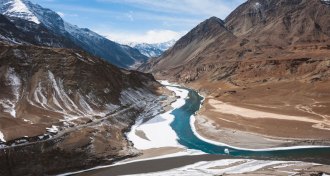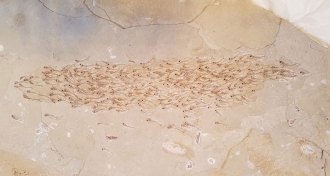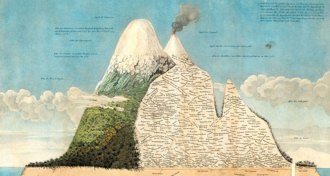All Stories
-
 Health & Medicine
Health & MedicineResurgence of measles is a tale as old as human history
Editor in Chief Nancy Shute discusses the recent global measles outbreak and the history of the spread of pathogens.
By Nancy Shute -
 Planetary Science
Planetary ScienceIcy volcanoes on Pluto may have spewed organic-rich water
Planetary scientists found ammonia-rich ice near cracks on Pluto, suggesting the dwarf planet had recent icy volcanoes.
-
 Climate
ClimateHimalayan glacier melting threatens water security for millions of people
Asia’s glaciers are melting faster than they are accumulating new stores of snow and ice.
-
 Physics
PhysicsIn a first, scientists took the temperature of a sonic black hole
A lab-made black hole that traps sound, not light, emits radiation at a certain temperature, as Stephen Hawking first predicted.
-
 Physics
Physics100 years ago, an eclipse proved Einstein right. Today, black holes do too — for now
In 1919, an eclipse affirmed Einstein’s famous general theory of relativity. Now scientists hope to use black holes to poke holes in that idea.
-
 Animals
AnimalsA 50-million-year-old fossil captures a swimming school of fish
Analysis of a fossilized fish shoal suggests that animals may have evolved coordinated group movement around 50 million years ago.
-
 Health & Medicine
Health & MedicineOne number can help explain why measles is so contagious
The basic reproduction number, or "R naught," of measles shows how contagious the disease is compared with other pathogens.
-
 Physics
PhysicsA new optical atomic clock’s heart is as small as a coffee bean
Optical atomic clocks are extremely good at keeping time, and they’re on their way to becoming pocket watches.
-
 Life
LifeHow bacteria nearly killed by antibiotics can recover — and gain resistance
A pump protein can keep bacteria alive long enough for the microbes to develop antibiotic resistance.
-
 Earth
EarthThis iconic Humboldt map may need crucial updates
A seminal, 212-year-old diagram of Andean plants by German explorer Alexander von Humboldt is still groundbreaking — but outdated, researchers say.
-
 Science & Society
Science & SocietyMurray Gell-Mann gave structure to the subatomic world
Best known for his quarks, the preeminent theoretical physicist was also a complexity pioneer
-
 Animals
AnimalsShy fish no bigger than a pinkie provide much of the food in coral reefs
More than half of the fish flesh that predators in coral reefs eat comes from tiny, hard-to-spot species.
By Susan Milius